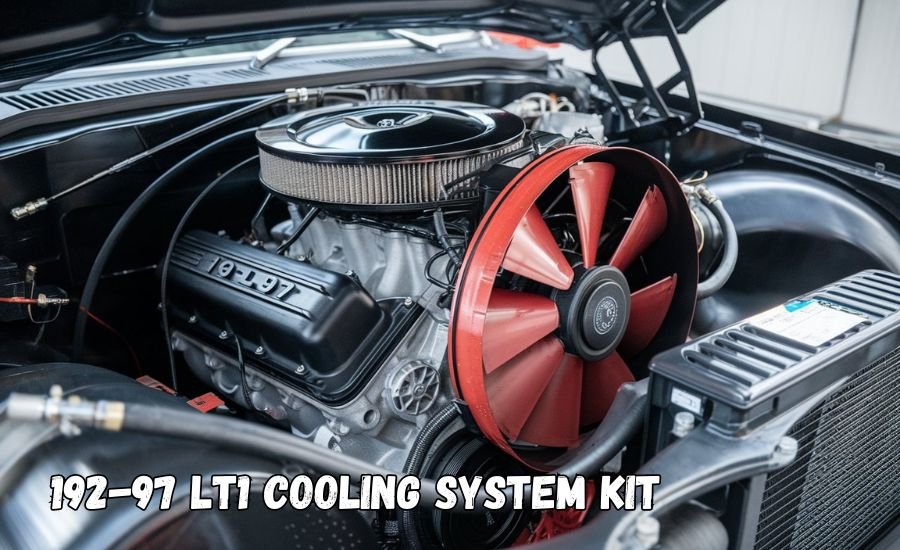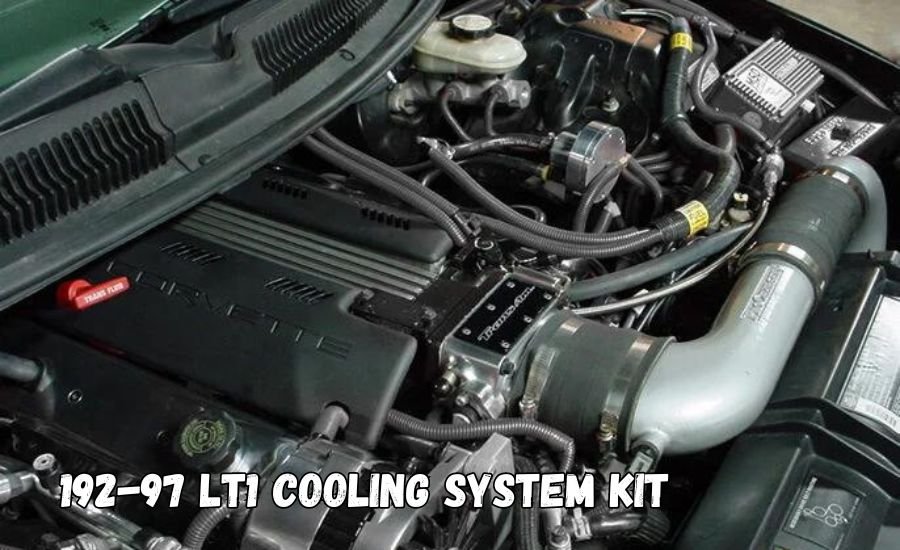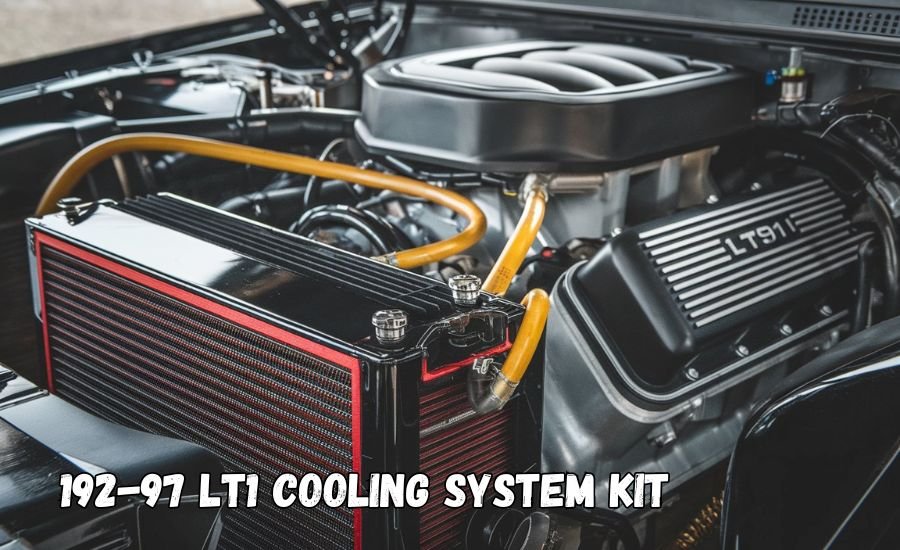If you’re an enthusiast or owner of a Chevrolet LT1 engine from 1992 to 1997, you know that performance is key. The 192-97 LT1 Cooling System Kit is an essential upgrade that ensures your engine operates at optimal temperatures. Cooling systems are often overlooked in high-performance engines, but they play a critical role in preventing overheating, improving performance, and extending the life of your engine.
In this comprehensive guide, we will explore everything you need to know about the 192-97 LT1 Cooling System Kit, including its components, benefits, installation process, troubleshooting tips, and real-world user experiences. Our goal is to equip you with the knowledge needed to make an informed decision about upgrading your cooling system.
Understanding the LT1 Engine: A High-Performance Workhorse
The LT1 Engine: Features and Specifications
The LT1 engine is a small-block V8 that was part of Chevrolet’s Gen II small-block family. Launched in 1992, it became popular due to its use in performance-oriented vehicles such as the Corvette, Camaro, and Caprice. Here are some key specifications of the LT1 engine:
- Displacement: 5.7 liters (350 cubic inches)
- Power Output: Approximately 300 horsepower (varies by model)
- Torque: 340 lb-ft (varies by model)
- Compression Ratio: 10.5:1
- Fuel System: Multi-port fuel injection
These engines are renowned for their power and efficiency, but they can also generate significant heat, especially during demanding driving conditions. Therefore, a robust cooling system is essential to prevent overheating and ensure optimal performance.
Cooling System Basics: Why Is Cooling Important?
The cooling system in any vehicle is responsible for regulating engine temperature. An effective cooling system prevents overheating, which can lead to engine knock, warped cylinder heads, blown gaskets, and ultimately, engine failure. Here’s how the cooling system works:
- Coolant Flow: Coolant circulates through the engine, absorbing heat and carrying it to the radiator.
- Heat Dissipation: The radiator dissipates heat into the atmosphere, allowing the coolant to return to the engine at a lower temperature.
- Temperature Regulation: The thermostat controls the flow of coolant based on engine temperature, ensuring that the engine operates within its ideal temperature range.
For the LT1 engine, managing temperature is crucial, particularly during high-performance driving or in hot weather conditions. This is where the 192-97 LT1 Cooling System Kit comes into play.
The 192-97 LT1 Cooling System Kit: Components and Features

What’s Included in the Kit?
The 192-97 LT1 Cooling System Kit is designed to replace factory components that may not adequately manage engine heat. Here’s a breakdown of the key components included in the kit:
- High-Performance Radiator:
This radiator features a larger core and improved airflow design, allowing for better heat dissipation compared to stock radiators. The enhanced cooling capacity helps maintain optimal engine temperatures, especially under heavy loads or during spirited driving. - Upgraded Water Pump:
The water pump is crucial for circulating coolant throughout the engine. The upgraded water pump in the kit provides better flow rates, ensuring that coolant reaches all critical engine components quickly and efficiently. - Thermostat and Hoses:
The kit includes a high-quality thermostat that opens at the correct temperature to maintain optimal coolant flow. The hoses are reinforced to withstand higher temperatures and pressures, reducing the risk of leaks or failures. - Enhanced Cooling Fans:
The kit may also include upgraded cooling fans that provide increased airflow over the radiator. Improved fan efficiency helps reduce engine temperatures during idling or low-speed conditions.
Compatibility
The 192-97 LT1 Cooling System Kit is compatible with several Chevrolet models equipped with the LT1 engine, including:
- 1992-1997 Chevrolet Corvette
- 1992-1997 Chevrolet Camaro
- 1993-1997 Chevrolet Impala SS
- 1992-1997 Pontiac Firebird
When considering an upgrade, it’s essential to ensure that the kit matches your vehicle’s specific make and model.
Benefits of Upgrading to the 192-97 LT1 Cooling System Kit
Improved Cooling Efficiency
The primary advantage of the 192-97 LT1 Cooling System Kit is its enhanced cooling efficiency. The high-performance radiator and upgraded water pump work together to provide superior heat dissipation. This means that your engine can operate at optimal temperatures, reducing the likelihood of overheating even during demanding driving conditions.
Increased Engine Performance
By maintaining lower operating temperatures, the cooling system kit helps unlock the full potential of the LT1 engine. Cooler engines can perform better, providing increased horsepower and torque. This is especially beneficial for those who enjoy spirited driving or track days, where engine temperatures can spike significantly.
Extended Engine Life
Overheating is one of the leading causes of engine wear and failure. By preventing excessive heat buildup, the 192-97 LT1 Cooling System Kit contributes to a longer engine lifespan. This can save you money in the long run by avoiding costly repairs and replacements.
Cost Savings
While there is an initial investment in upgrading to the cooling system kit, the potential cost savings from preventing engine damage and extending the life of your engine can be substantial. Additionally, improved performance can lead to enhanced fuel efficiency, further offsetting costs.
Common Cooling Problems with LT1 Engines
Ineffective Factory Radiators
Many LT1 engines come equipped with stock radiators that may not provide sufficient cooling, especially under high-performance conditions. Upgrading to the 192-97 LT1 Cooling System Kit addresses this issue by replacing the stock radiator with a more efficient design.
Thermostat Failures
Thermostat issues can lead to overheating. The factory thermostat may not open at the correct temperature, preventing coolant from flowing through the engine. The upgraded thermostat in the cooling system kit is calibrated to maintain the ideal temperature, improving engine performance.
Fan Control Issues
Some LT1 models may experience fan control problems, where the fan runs continuously or fails to activate when needed. The cooling system kit includes options for customizable fan settings, allowing for better temperature management and reducing the risk of overheating.
Installation Process: Step-by-Step Guide

Installing the 192-97 LT1 Cooling System Kit can be a rewarding project for those with basic mechanical skills. Here’s a step-by-step guide to help you through the installation process:
Tools and Materials Needed
- Basic hand tools (wrenches, screwdrivers, pliers)
- A socket set
- Coolant drain pan
- Safety gloves and goggles
- New coolant (check manufacturer specifications)
Step 1: Prepare Your Vehicle
- Safety First: Park the vehicle on a flat surface and engage the parking brake.
- Drain the Coolant: Use the drain pan to collect coolant from the radiator and hoses. This will prevent spills and make the installation cleaner.
Step 2: Remove Old Components
- Remove the Radiator: Disconnect the hoses connected to the radiator, and carefully remove the old radiator from the vehicle.
- Replace the Water Pump: Remove the water pump by unbolting it from the engine. Clean the mounting surface to ensure a proper seal for the new pump.
- Remove the Thermostat: Take out the old thermostat, and clean the housing to prepare for the new thermostat.
Step 3: Install the New Components
- Install the New Radiator: Position the new high-performance radiator in place and secure it according to the manufacturer’s instructions.
- Attach the Water Pump: Install the upgraded water pump, making sure it is tightened securely.
- Install the New Thermostat: Follow the instructions provided in the kit to correctly install the new thermostat in the housing.
Step 4: Connect Hoses and Fans
- Connect the Hoses: Attach the new hoses to the radiator and water pump, ensuring they are tight and leak-free.
- Install Cooling Fans: If included in the kit, attach the upgraded cooling fans as per the manufacturer’s guidelines.
Step 5: Fill the Cooling System
- Add Coolant: Fill the system with a compatible coolant mixture, following the recommended ratios.
- Bleed the System: Run the engine to remove any air pockets in the cooling system. Monitor the coolant flow to ensure proper circulation.
Step 6: Test the Installation
- Check for Leaks: Inspect all connections for leaks and tighten as necessary.
- Monitor Temperature: Take the vehicle for a test drive, keeping an eye on the temperature gauge to ensure it stays within the optimal range.
Troubleshooting Common Issues After Installation
Even with the best systems, issues can arise. Here are some common problems and their solutions:
Air Pockets in the Cooling System
If the engine overheats after installation, it might be due to trapped air in the system. Ensure proper bleeding of the system to remove any air pockets.
Fan Not Operating Correctly
If the cooling fan doesn’t activate or runs continuously, double-check the wiring and connections. The programmable fan control in the kit allows for adjustments, so ensure it’s set correctly.
Overheating Despite Upgrade
If overheating persists, consider checking for other issues such as a malfunctioning thermostat, blocked hoses, or problems with the engine itself. Sometimes, additional upgrades like aftermarket headers or a performance exhaust may be needed for optimal results.
Real-World Experiences: Customer Reviews and Feedback
Positive Experiences
Many users have reported significant improvements in engine performance and cooling efficiency after installing the 192-97 LT1 Cooling System Kit. Enthusiasts often mention the noticeable reduction in engine temperatures during both daily driving and high-performance scenarios. Users have also appreciated the durability of the components, stating that the kit has held up well even after extensive use.
Challenges Faced
While most users have had positive experiences, some have encountered challenges during installation. A few customers noted that the instructions could be clearer, particularly for first-time installers. However, many found that online forums and videos provided helpful insights, making the installation process manageable.
Conclusion: Is the 192-97 LT1 Cooling System Kit Worth It?
Upgrading to the 192-97 LT1 Cooling System Kit is an investment that can pay off in terms of performance, reliability, and engine longevity. With enhanced cooling efficiency and the potential for increased power output, this kit is a worthwhile consideration for any LT1 owner looking to optimize their vehicle’s performance.By understanding the components, installation process, and common issues, you can make an informed decision about whether this cooling system kit is right for you. Whether you’re an avid enthusiast or simply looking to maintain your vehicle, the 192-97 LT1 Cooling System Kit can help you achieve a reliable and high-performing engine.
Stay informed with the latest news and updates on Techi Boomb
